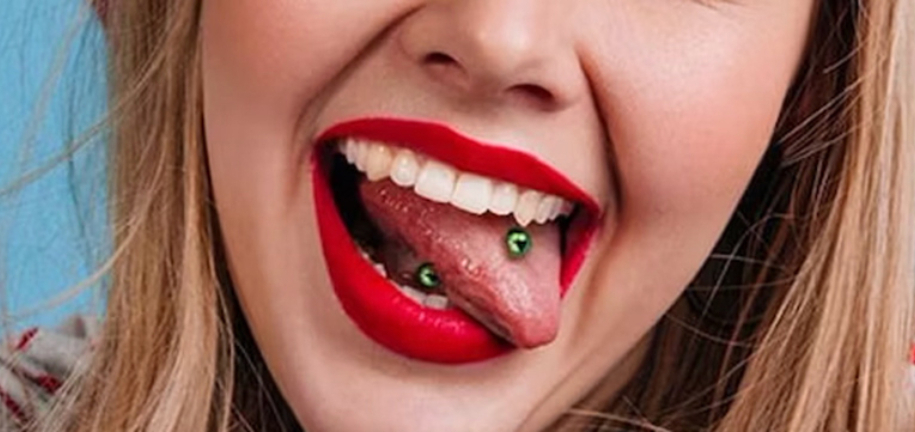
All About Tongue Piercings
Tongue Piercings Demystified: Procedure, Pain, and Jewelry Options Explored
There are several ways to get a . The most common one is to pierce the tongue's midline (at about 2 cm from the tip) or just in front of the tongue frenulum. However, every tongue is different, so it’s important to have yours checked. There are two large blood vessels in the tongue that should not be pierced!
The tongue is the fastest healing organ in the body, so you generally heal fast after having it pierced. But be aware that it may swell up to twice its size.
I want to pierce my tongue
Once you've decided to get a tongue piercing, it's time to find your piercer. Choose a professional who you know will do a good job. Don't ask your dad to get out the hammer and nails! Also, make sure your piercer has a certification and a good reputation.
What materials should I choose?
Your piercer will most likely use titanium to pierce you. Titanium is 100% nickel-free and weighs only half as much as surgical steel.
Once your piercing has healed completely, you can switch to other materials such as surgical steel, PTFE, or acrylic. These latter two kinds of plastic are cheaper than titanium and highly flexible, so they don’t damage your teeth and gums.


What size of jewelry do I need?
When the tongue has recently been pierced, it can swell to twice its size. This means that you get a starter bar in the beginning, which you can change after the healing period. A standard tongue bar is 16 mm long and 1.6 mm thick.
Some prefer to use shorter rods, but this should be done with care. If you choose a stick that is too short, the balls may dig into your tongue, which can be highly unpleasant. If you have that problem, you can buy a silicone disk. With its 7 mm diameter, it’s larger than the balls on your tongue, preventing the discomfort they might cause.
You can buy loose rods and balls to customize your tongue piercing to fit your tongue 100%. There are lots of different designs, from simple ones to more daring ones.
How do I heal my tongue piercing?
should be taken as seriously as the piercing itself. Follow your piercer's advice and revisit the piercing studio if you need help.
Besides, you should:
- Buy a new toothbrush; your old one is a germ bomb.
- Avoid smoking and drinking alcohol during the healing period. If you decide to do either of these things, carefully rinse your mouth with tap water after each cigarette or drink.
- Avoid spicy food.
- Avoid foreign body fluids. No french-kissing for a while!
It’s important to not play with your new piercing bar during the healing period. If your tongue is very swollen, it may be helpful to cool it down with cold water or an ice cube.
Does it hurt to get a tongue piercing?
You've probably experienced the feeling of biting your tongue. The pain is intense but momentary. Pain is subjective, so it's hard to give an answer for everyone. According to our own research at Bodymod, the pain of a tongue piercing ranks 2 on a scale from 1 to 10.
Can I remove my piercing bar?
As previously mentioned, the tongue is the body's fastest healing organ. If you take your piercing bar out, you might find that you cannot get it back in!
Can a tongue piercing be crooked?
Yes, it can, and this is usually done on purpose.
The top and bottom balls of the tongue jewelry should be straight across each other when you look in the mirror. But from the side, the top ball should sit further back towards the palate, whereas the bottom ball sits slightly further forward.
In other words, it should be crooked when you look at it from the side, but not crooked when you look at it from the front. This helps to protect your teeth.

Posted in:
